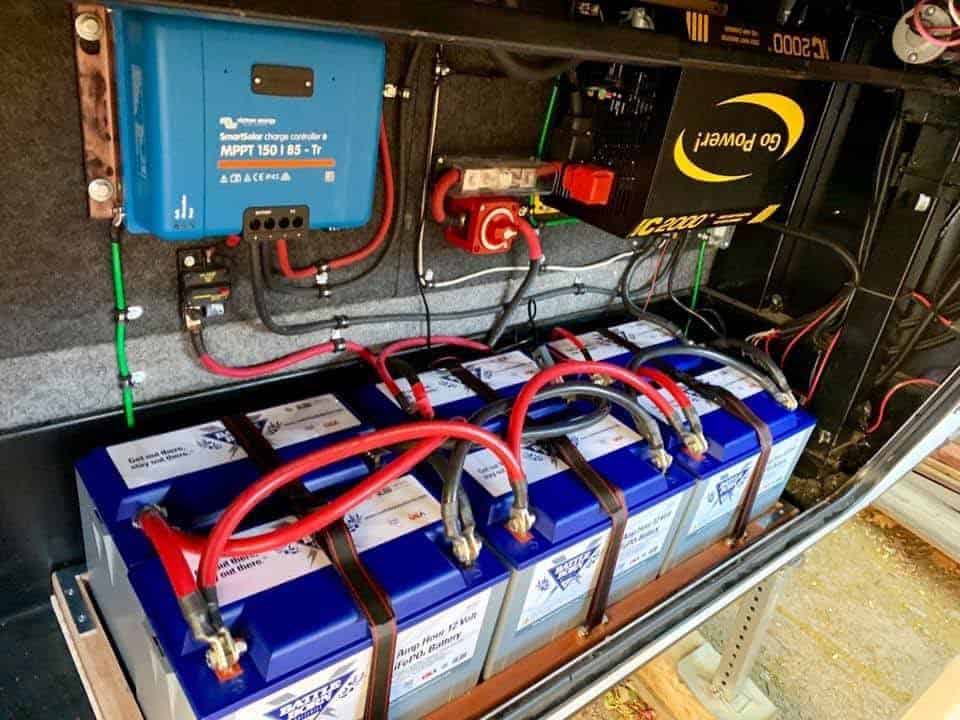Ibid49
New Member
I just posted a comment on Will's latest YouTube poll on Battleborn Batteries, and he invited me to post it here to see if anyone can help diagnose this issue.
Short version is my Battleborn batteries (LiFePO4) keep dying after about a year of use. (It's happened twice), even though I think my system is well over-engineered for my usage. The long version can get very detailed, so I'm not sure how much to put here.
My system:
My current suspicions lie with the Victron inverter, although we just sent it in to someone who's supposed to be the best diagnostician for those devices. And he supposedly ran it through the wringer and gave it a clean bill of health as long as you ignore the weirdness he experienced that then went away.
My reasons for suspecting the inverter charger are that it just keeps acting weird:
Anyway, I'm sure more detail is needed, but perhaps it would be faster to ask specific questions and I can answer them.
TIA, I know it's a long read.
Short version is my Battleborn batteries (LiFePO4) keep dying after about a year of use. (It's happened twice), even though I think my system is well over-engineered for my usage. The long version can get very detailed, so I'm not sure how much to put here.
My system:
- 4 12v 100Ah Battleborn Batteries in series and then parallel for a 24v 200Ah bank.
- Victron Multiplus 3000w inverter/charger
- Victron 150/85 solar charge controller
- 6 360w PV panels combined in a combiner box for 3 strings of 2
- Bare minimum of 2 awg cabling (this has been changed recently)
- Full video walkthrough of my current system here -
My current suspicions lie with the Victron inverter, although we just sent it in to someone who's supposed to be the best diagnostician for those devices. And he supposedly ran it through the wringer and gave it a clean bill of health as long as you ignore the weirdness he experienced that then went away.
My reasons for suspecting the inverter charger are that it just keeps acting weird:
- It is the only part of the system that was present during both battery failures. All cabling and all 4 batteries were replaced between the first failure and the second.
- For about 8 months we were using it exclusively to charge the batteries from a gas generator, as we didn't have our PV panels in and working yet, and we still use that method to charge the batteries when we have several cloudy days in a row. So it's had plenty of opportunity.
- It trips the generator's overload protection (a 8750 watt generator) if we are pulling anything over 100 watts when we connect the Multiplus to the generator. We have to shut down everything in the house before we try to charge the batteries off the Multiplus. After the initial startup, we can turn everything back on and it's fine.
- If instead, we switch it from "Inverter Only" mode to "Charger Only" mode after the generator is running and connected, it does not trip the generator overload. It does however lose power to the house for up to 6 or 7 seconds while it switches over.
- It also sometimes trips the generator's overload protection when the batteries reach fully charged voltage.
- Sometimes when batteries reach full charge, the inverter shuts off electricity to the house for a second or two. This might oscillate on and off two or three times before it stays on.
- When these battery issues first started happening for the second time, I noticed the inverter was shorting out the batteries, and I had continuity tone between the positive and negative battery terminals on the inverter, even when nothing else was connected to the Multiplus. That issue resolved itself by disconnecting the batteries for a while and then reconnecting them.
- On another recent instance, I had just individually charged my batteries to full using a separate 12v charger and was hooking them back up to the inverter. Once I had everything connected and tightened and turned the battery switch back on, I measured voltage across the battery bank (of just two of the batteries) and got 4 volts. Finding that exceedingly curious with two batteries that I had just charged to full, I measured them individually, and one of them (connected to negative) was reading just fine at 14.2V, and the other one was reading -10V. That's negative 10 volts. I know what you're thinking, that I had my probes switched. I didn't. I checked it multiple times. (And also, 14 - 10 is 4, exactly what they read together) And when I disconnected the battery switch, they both went back to 14.2V. Somehow, that inverter was pulling voltage from both batteries in opposite directions with nothing but a jumper cable between them.
- When we sent it in to a Victron Service Center and they hooked it up to their batteries, the inverter read low battery alarm even with full batteries. They "fixed" it by doing a factory reset on the inverter and flashing the firmware/software, but they couldn't explain how it happened.
Anyway, I'm sure more detail is needed, but perhaps it would be faster to ask specific questions and I can answer them.
TIA, I know it's a long read.




